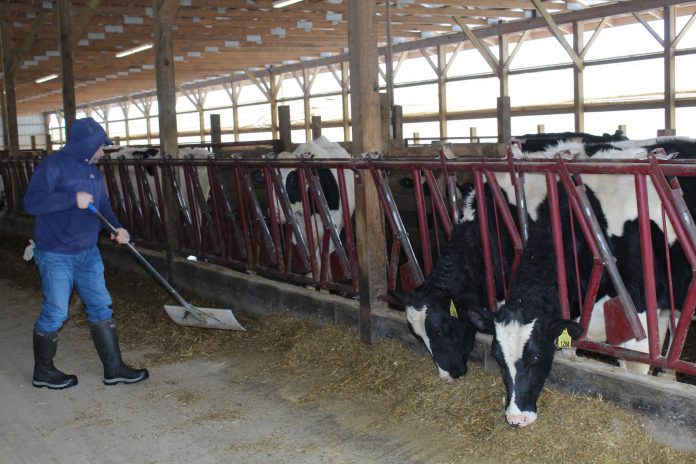Summer has flown by and fall is almost upon us. Even though we haven’t reached the cooler temperatures yet associated with fall and winter, it’s never too early to start planning for the cold and the reduced forage availability that usually comes with it.
Depending on your pasture/hay quality, you may not have enough forages to adequately supply livestock year-round. This is when supplemental feeds are especially important.
Rations
To determine which supplemental source to feed livestock, it is important to understand the basic components of rations. Each ration will depend on factors such as species, size, age, reproductive status, etc. There is no one-size-fits-all. Check an animal’s body condition score to determine if there are signs of a deficiency. Deficiencies can signal the need for supplementation.
Keep in mind the cold, windy and/or wet conditions one often encounters in the fall and winter will only increase energy requirements in rations. For example, cow energy requirements may increase up to 30% during these conditions, increasing their overall intake.
Water is the most important ration but is often overlooked. Make sure livestock have clean, fresh water, in liquid form. Ice and snow will not meet an animal’s water needs.
Protein, energy, fiber, minerals and vitamins also make up rations. Protein goes towards the structuring of organs, and energy is the total caloric value of feed that allows animals to do physical activities. Crude fiber can provide energy and affect the passage of food through the digestive system. Minerals contribute to metabolism and immune function as well as structure, while vitamins primarily affect physiological functions.
Determine how much forage or hay will contribute to each of these components. You can use a forage test to calculate how much of the forage diet will meet the nutritional requirements of the animal. Laboratories that analyze forages can be found on the National Forage Testing Association website at: www.foragetesting.org. Keep in mind that results are only as good as the sample and that forage quality can change among fields depending on season and growing and harvesting conditions.
Supplemental
Supplemental feeds can be dry or liquid. Dry feeds include meals, crumbles, cubes (or cakes or pellets) or blocks. Meals come in a loose form that may be more appetizing for some species. However, these can lead to overconsumption and excess waste if the right equipment is not invested in. Crumbles include crushed dry feeds and are often used in poultry feeds. This form works best for windy locations where losses are observed.
Cubes, cakes or pellets are often used for protein supplements that are hand-fed. They often require a significant investment upfront for equipment and storage. Dry blocks are more flexible with feed formulations compared to other dry feeds. Keep in mind that the amount consumed will depend on whether the blocks are dry or soft.
Liquid feeds are primarily self-fed. They may be limited in what formulations are available. Many dry ingredients are difficult to include in a liquid form. Hardened molasses blocks can be used as an in-between for pressed blocks and liquids.
No matter what supplemental feed you use, water access will affect intake. Make sure water sources are never frozen (or at least for as little time as possible).
When utilizing supplemental feeds, don’t forget about pasture management strategies that can extend the grazing season, such as stockpiling forages, which allow for livestock to graze a pasture well into the winter months. This can be something as simple as adding different species of forages to a field for stockpiling and allowing for a period of rest for pastures between summer and winter. Keep minerals in a separate location from feed and water to prevent compaction from animals congregating at a single spot and reduce the forages available.
Supplemental feeds should not replace your forages but can complement an animal’s ration. Avoid rapid changes in an animal’s diet with supplementation. Understanding each species and life stage’s needs is necessary to maximize efficiency and reduce waste when the temperatures begin to drop.













